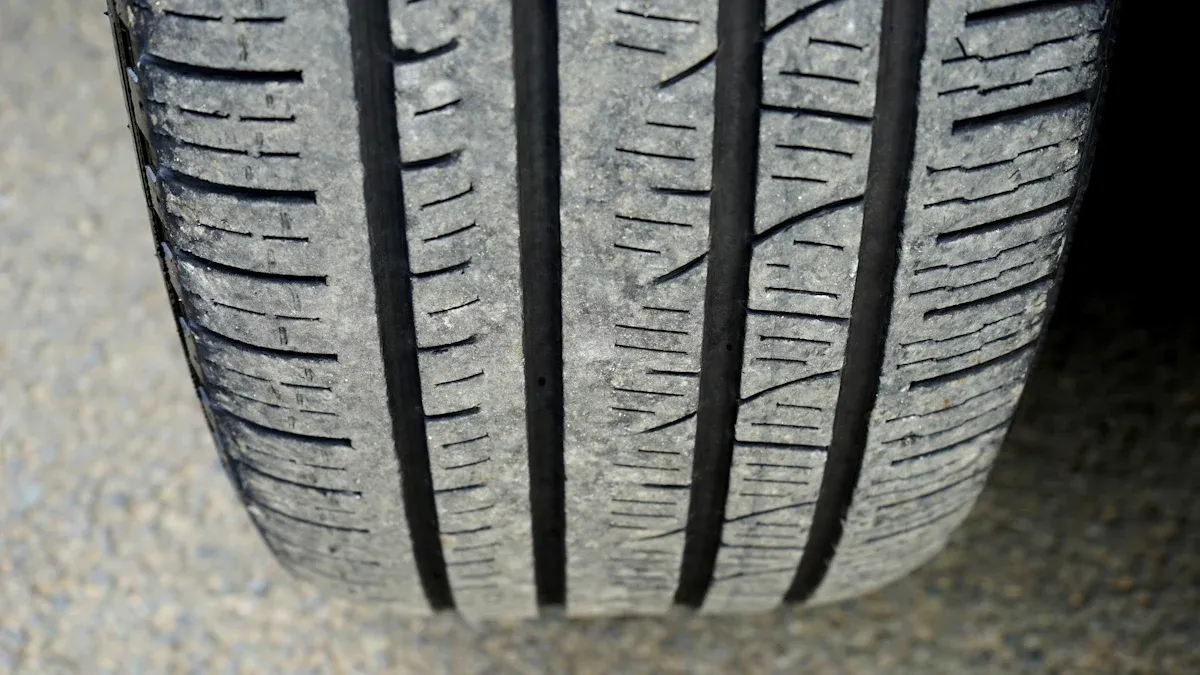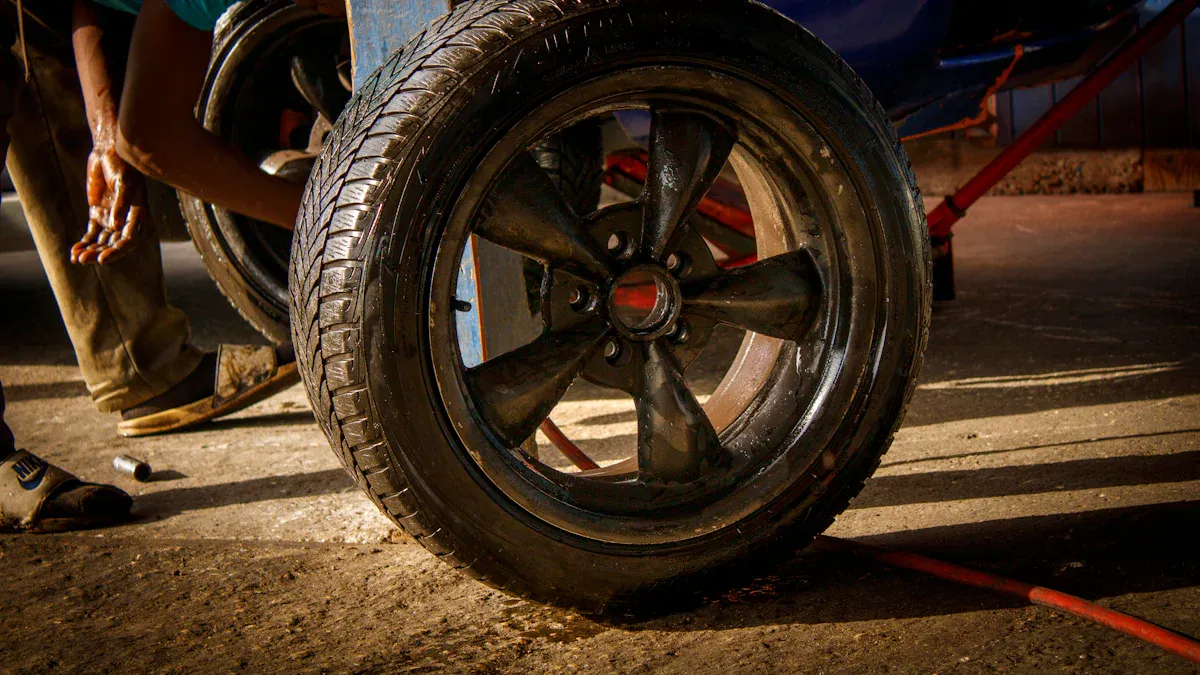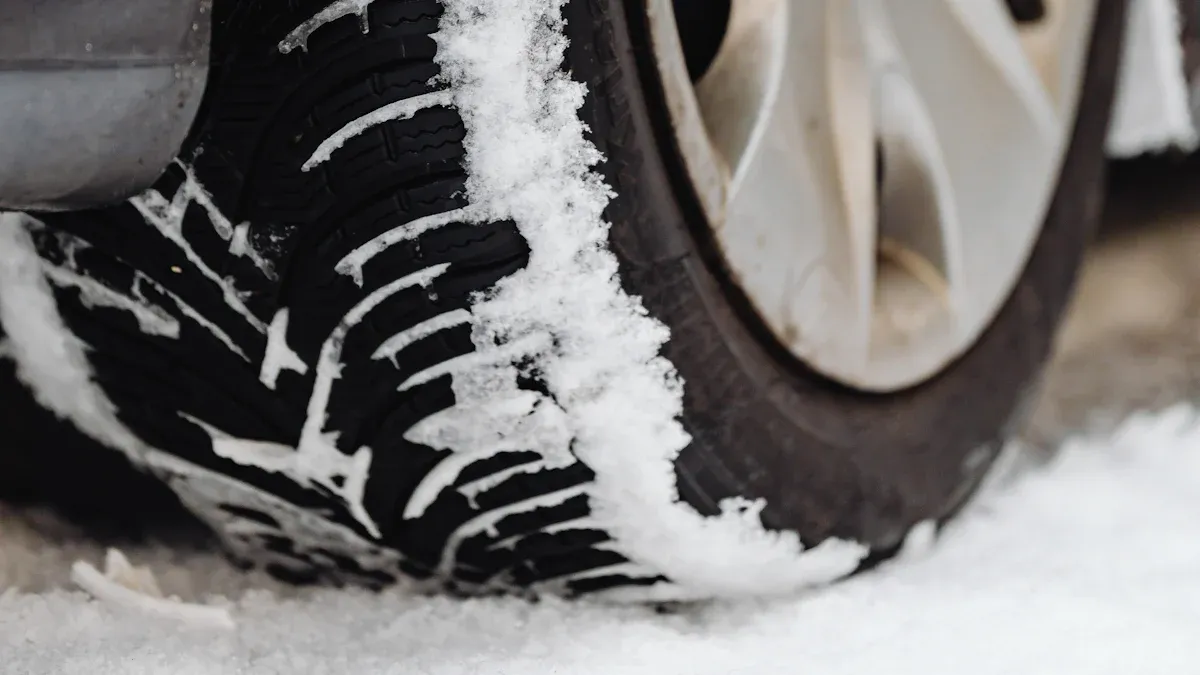
When winter comes, it’s essential to pay attention to the Snow Tire Safety Alert and check your tire tread depth. Good tread depth helps your car grip the road better in snow. Worn tires can lead to dangerous problems, including losing grip and requiring more time to stop. Being aware of tread depth is crucial for your safety while driving in winter conditions. Remember, your safety relies on how well your tires perform in tough weather.
Key Takeaways
Check your tire tread depth often. Aim for at least 4/32″ for safe winter driving.
Pick winter tires with deep grooves and sharp edges for better grip on snow and ice.
Look at your tires for signs of wear like cracks or bulges to avoid accidents.
Keep the right tire pressure to help with even wear and better handling in winter.
Change tires when tread depth gets to 6/32″ or less to improve safety and control.
Snow Tire Safety Alert: Importance of Tread Depth

Traction and Control
Tread depth is very important for your vehicle’s grip and control in winter. When driving on snow or ice, your tires must hold the road well. Deeper treads help your tires push snow and slush away from where they touch the ground. This helps keep better contact with the road. As a result, you get better traction, which is key for safe winter driving.
If your tires have low tread depth, they can’t grip the road well. This can cause skidding or sliding, especially when you stop suddenly or turn sharply. You might find it hard to control your vehicle, which raises the chance of accidents. So, keeping enough tread depth is very important for your safety.
Tread Design Features
The way your snow tires are designed affects how well they work. Different tread design features help your tires handle winter weather better. Here’s a table that shows important tread design features and their benefits:
Tread Design Feature | Benefit |
|---|---|
Deep grooves | Clears snow and slush for better road contact. |
Wide tread blocks | Provides more grip on packed snow and ice. |
Increased biting edges | Improves traction by digging into the snow. |
Flexibility | Keeps tires soft in cold weather for better grip. |
Lateral Sipes | Boosts traction when speeding up or slowing down. |
Longitudinal Sipes | Enhances stability and handling on snowy roads. |
Sipe density | More sipes usually improve performance on snow and ice. |
These features work together to make sure your tires work well in snow. For example, deep grooves help move water and slush away, lowering the chance of hydroplaning. The tire’s flexibility helps it fit the road better, giving you more grip. Knowing these features can help you choose the right snow tires.
Also, government rules stress the need for tread depth. The Department of Transportation (DOT) says passenger vehicles must have at least 2/32″ tread depth. For commercial vehicles, the front tires must have at least 4/32″ tread depth. These rules show how important it is to keep proper tread depth for safety.
By focusing on tread depth and knowing tread design features, you can improve your vehicle’s performance and safety when driving in winter.
Risks of Shallow Tread

Hydroplaning Risks
Driving on tires with low tread depth raises your chance of hydroplaning. When you drive on slushy or wet roads, your tires need to push water away to keep grip. But worn or flat tires have a hard time doing this. Shallow grooves can’t move water or slush away fast enough, which makes it hard to hold onto the road.
When hydroplaning happens, your car can slide without control. This makes it tough to steer or stop. This can cause serious accidents, especially if you are going fast. To stay safe, always check your tread depth before driving in winter.
Stopping Distance Increase
Low tread depth also makes it harder to stop. Studies show that tires with less than 4/32″ of tread can make stopping distances longer by up to 30% on wet roads. This means if you need to stop quickly, your car may take much longer to stop completely.
Imagine driving in snow and needing to stop for a red light. If your tires are worn, you might not stop in time, which can cause a crash. The results of driving on worn tires can be serious, including accidents that could hurt you or damage your car.
To keep safe, check your tires often and change them when needed. Keeping your tread depth safe can help you stay in control and lower the chance of accidents during winter driving.
Signs for Tire Replacement
Visual Wear Indicators
You can often spot when your tires need replacement by looking for visual wear indicators. Modern snow tires come with rubber bars embedded in the tread. These bars act as a warning system. As the tread wears down, these bars become visible. When you see them, it means your tread depth is too low for safe driving.
Here are some common visual signs that indicate your tires may need replacing:
Worn Tread: If the tread appears flat or smooth, it’s time for new tires.
Cracks or Cuts: Look for any visible damage on the sidewalls. Cracks can lead to tire failure.
Bulges or Blisters: These can indicate internal damage. Replace the tire immediately if you notice any.
Regularly checking these indicators can help you stay safe on the road.
Measuring Tread Depth
Measuring tread depth accurately is essential for ensuring your tires are safe for winter driving. You can use a simple tool called a tread depth gauge, which is easy to find at auto parts stores. Here’s how to measure your tread depth:
Insert the Gauge: Place the gauge into the tread groove. Make sure it reaches the bottom of the groove.
Read the Measurement: Check the reading on the gauge. A depth of 4/32″ or more is generally safe for winter driving.
Repeat in Multiple Locations: Measure in several spots across the tire. This ensures you get an accurate reading, as wear can be uneven.
If you don’t have a gauge, you can use a penny. Insert the penny into the tread with Lincoln’s head facing down. If you can see all of Lincoln’s head, your tread is too shallow, and it’s time to replace your tires.
By keeping an eye on visual indicators and measuring tread depth regularly, you can maintain your safety on winter roads.
Best Practices for Tire Maintenance
Regular Inspections
Checking your snow tires often is very important for safe winter driving. You should look at your tires at least once a month and before long trips. If you skip these checks, it can lead to big problems. For example, less grip on snow and ice can make you lose control. Poor handling can increase the chance of accidents. Low tire pressure can make it harder to stop safely.
To keep your tires in good condition, follow these easy steps:
Check Tire Pressure: Make sure your tires are filled to the right pressure. Low pressure can cause uneven wear.
Inspect Tread Depth: Use a gauge to check tread depth regularly. This helps keep your tires working well.
Look for Damage: Check your tires for cracks, bulges, or other signs of wear, especially after weather changes.
Choosing Winter Tires
Picking the right winter tires is very important for your safety. Not all tires work the same in snowy weather. Here are some tips to help you choose the best winter tires:
Understand Your Needs: Think about how you drive and the winter weather in your area. If you drive in heavy snow, look for tires made for deep snow traction.
Check the Tread Design: Look for tires with deep grooves and biting edges. These features help improve grip on snow and ice.
Read Reviews: Look up tire performance ratings and customer reviews. This info can help you find good options.
Consult Professionals: Talk to tire experts at local shops. They can suggest tires based on your vehicle and driving conditions.
By following these best practices, you can make your snow tires last longer and stay safe on winter roads. Remember, good maintenance and the right tire choice are key for a successful winter driving experience.
Keeping the right tread depth is very important for safe winter driving. Here are some important points:
Change tires when tread gets to 6/32 inches or less.
Snow tires give better grip on snow and ice than all-season tires.
Better tread designs help you stop faster on slippery roads.
Enough tread depth helps stop hydroplaning and makes braking better.
By checking your tires often and changing them when needed, you can stay safer on winter roads. Take care of your tires to have a safer driving experience this winter! 🚗❄️
FAQ
What is the minimum tread depth for winter tires?
You should maintain a minimum tread depth of 4/32″ for winter tires. This depth ensures adequate traction on snow and ice, helping you stay safe while driving in winter conditions.
How often should I check my tire tread depth?
Check your tire tread depth at least once a month. Regular inspections help you identify wear and ensure your tires remain safe for winter driving.
Can I use all-season tires in winter?
All-season tires can perform adequately in light winter conditions. However, winter tires provide better grip and control on snow and ice, making them a safer choice for harsh winter weather.
How do I know when to replace my tires?
Replace your tires when the tread depth reaches 4/32″ or less. Additionally, look for visible signs of wear, such as cracks, bulges, or flat spots on the tread.
What should I do if I experience hydroplaning?
If you experience hydroplaning, remain calm. Avoid sudden movements. Gradually ease off the accelerator and steer in the direction you want to go. Once you regain traction, you can safely brake.
See Also
The Importance Of Monitoring Tire Tread Depth For Safety
Understanding Smart Tire Tread Depth Detectors And Their Function






